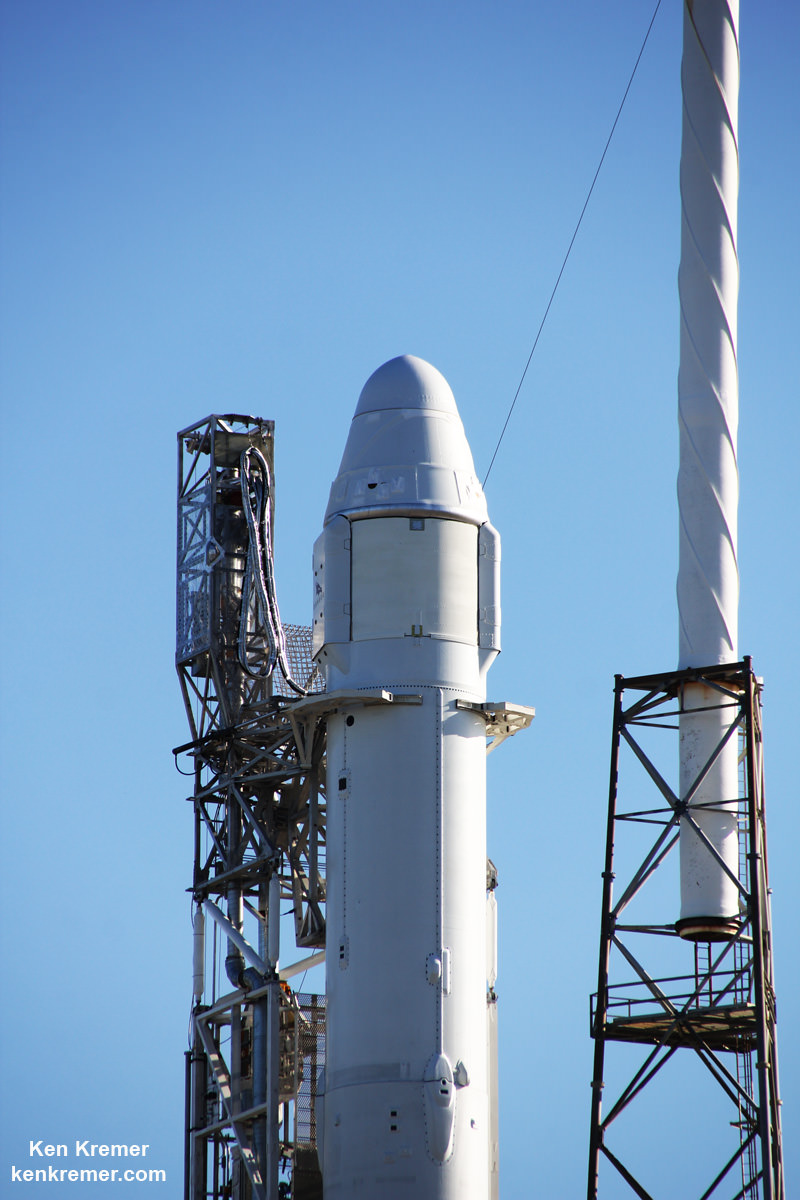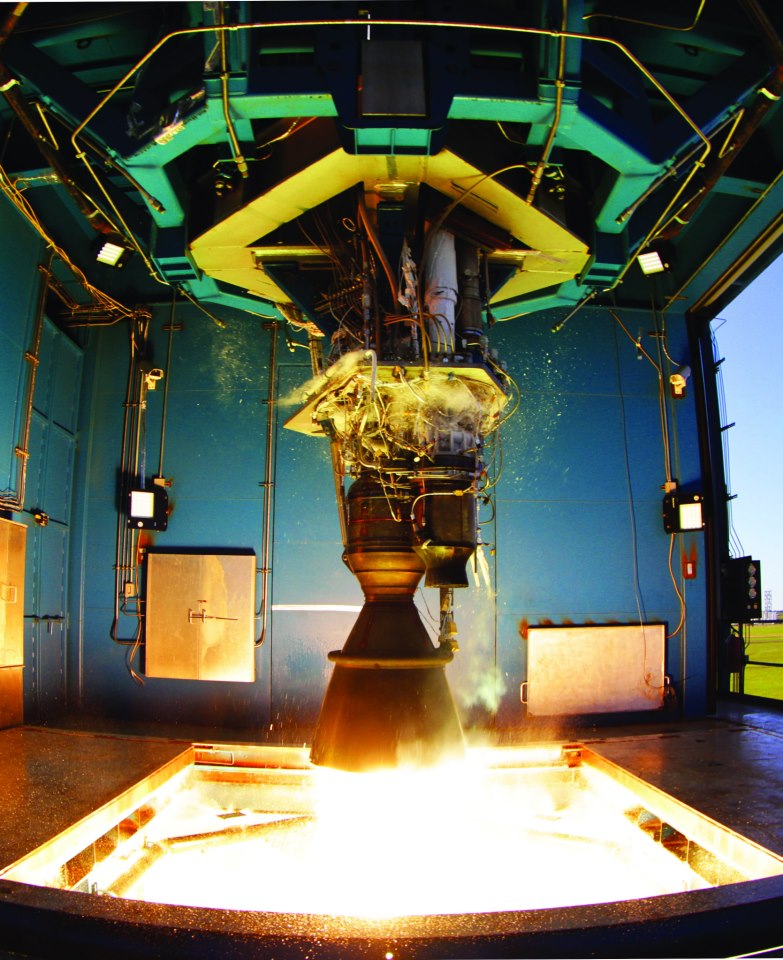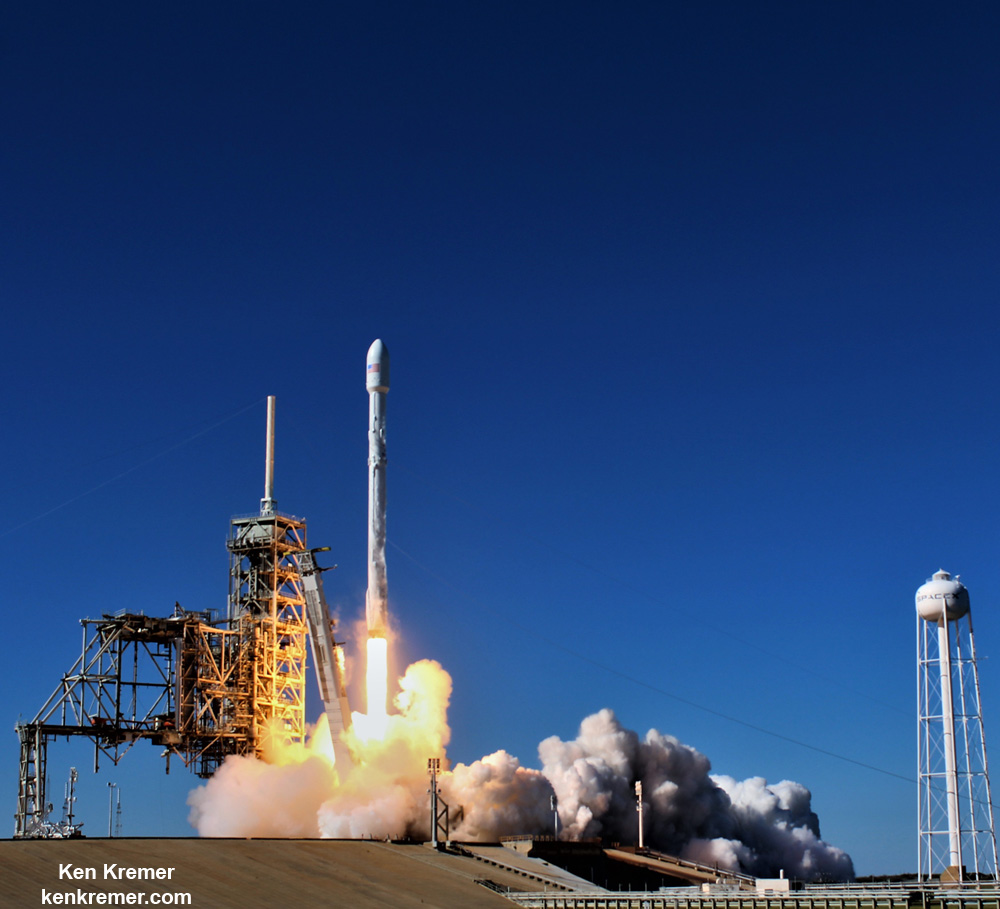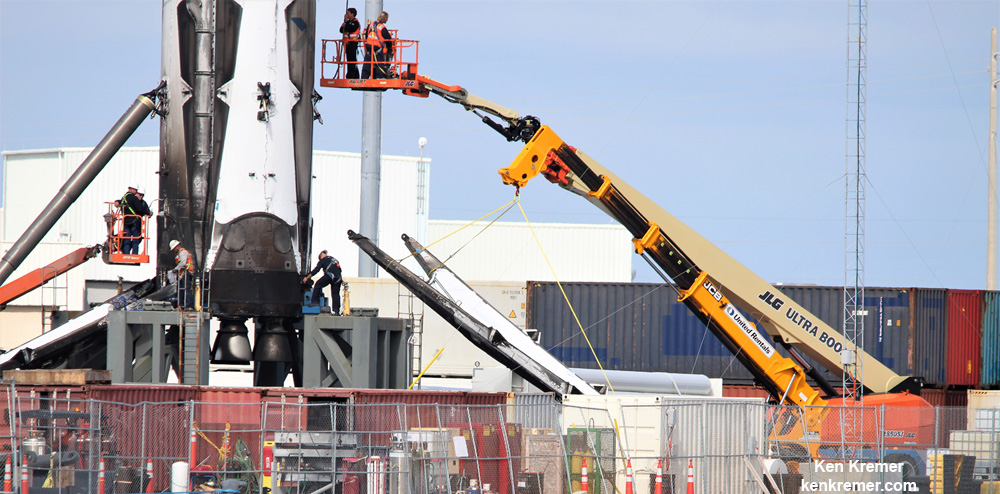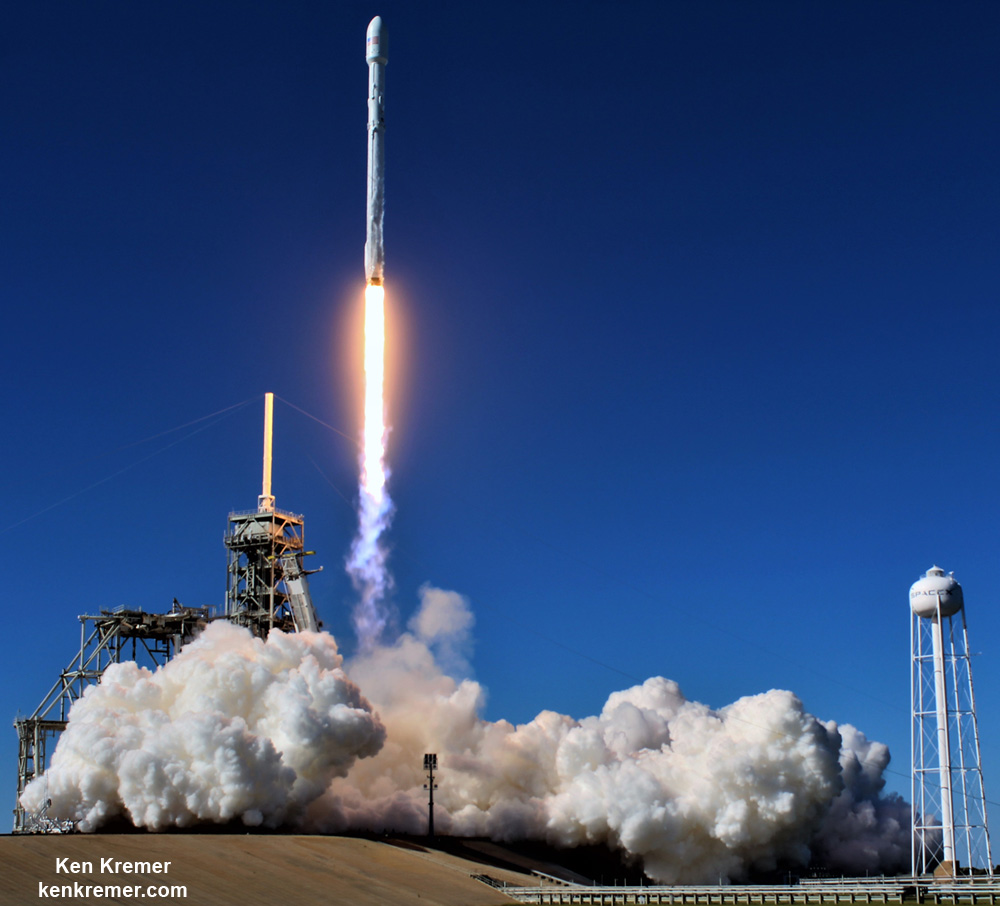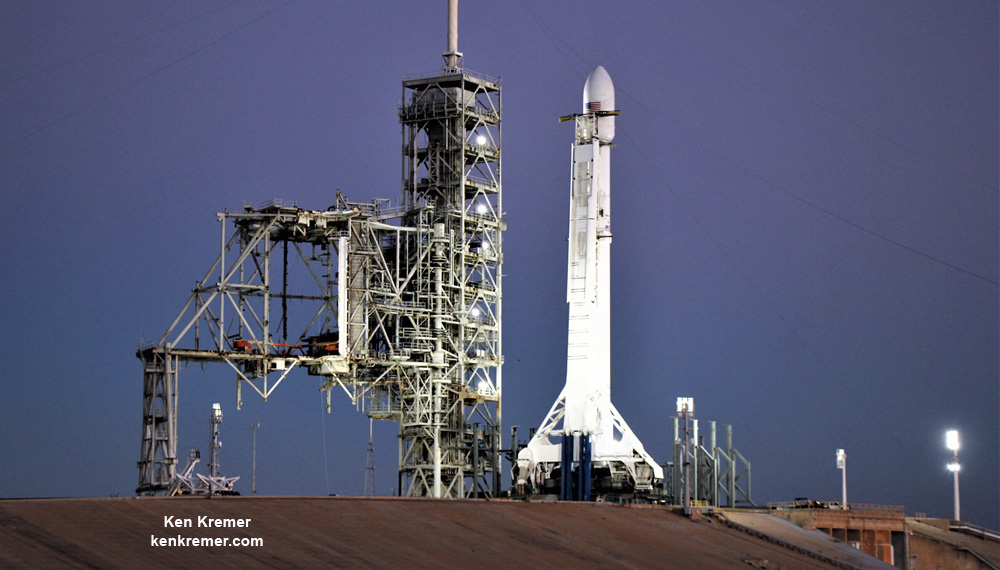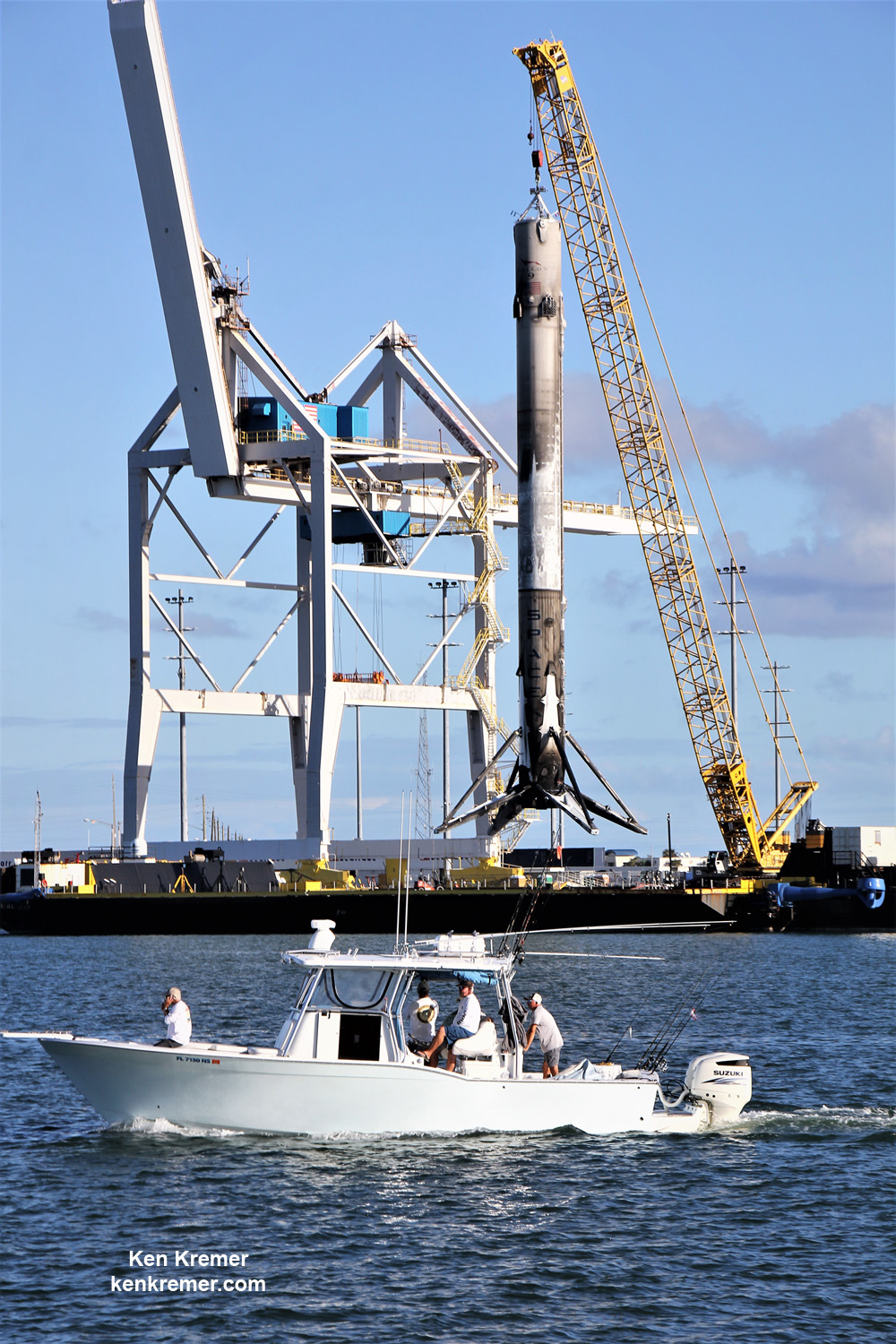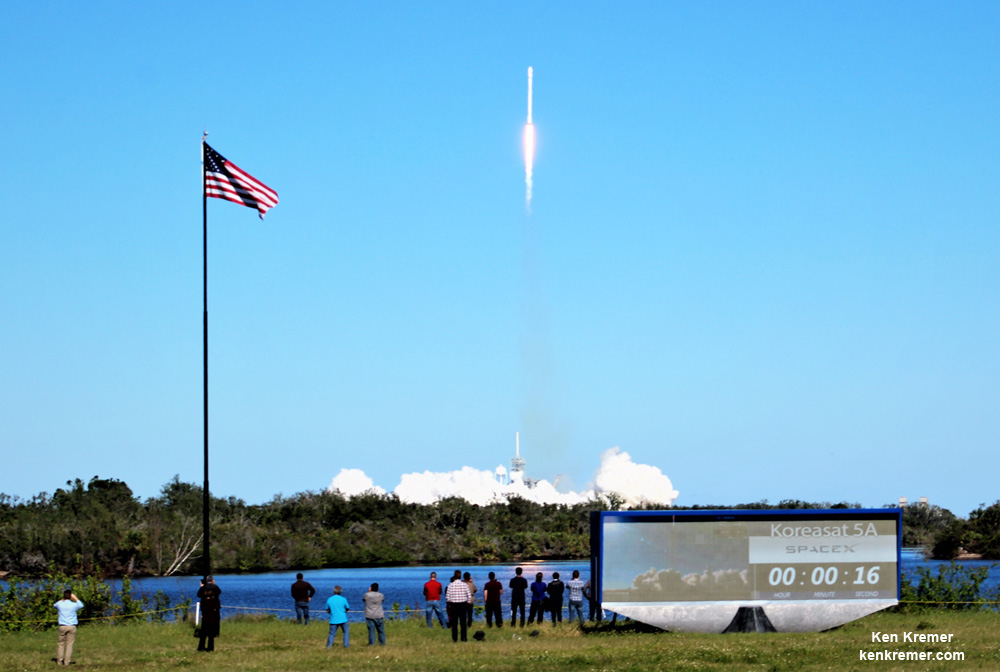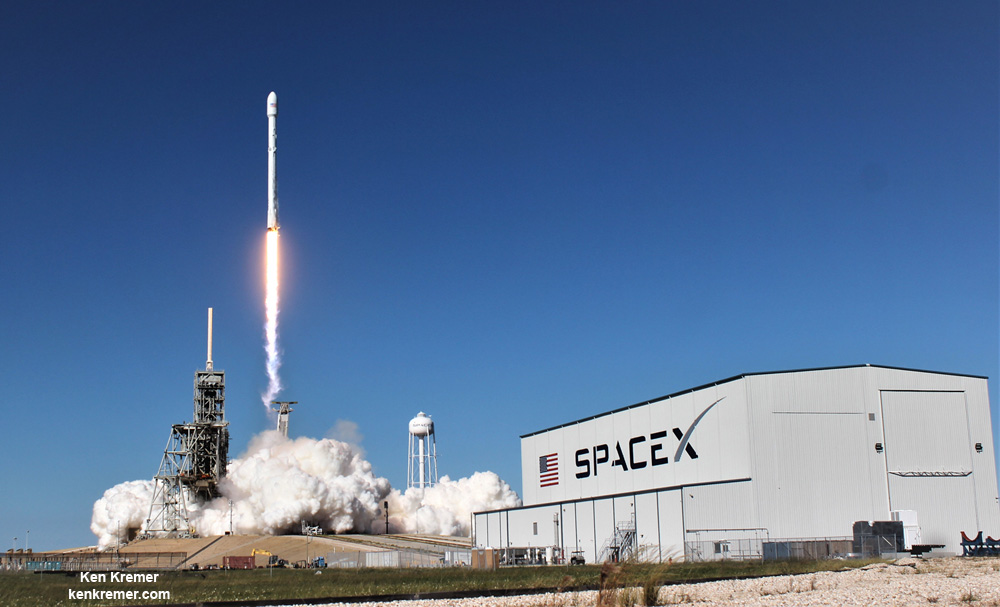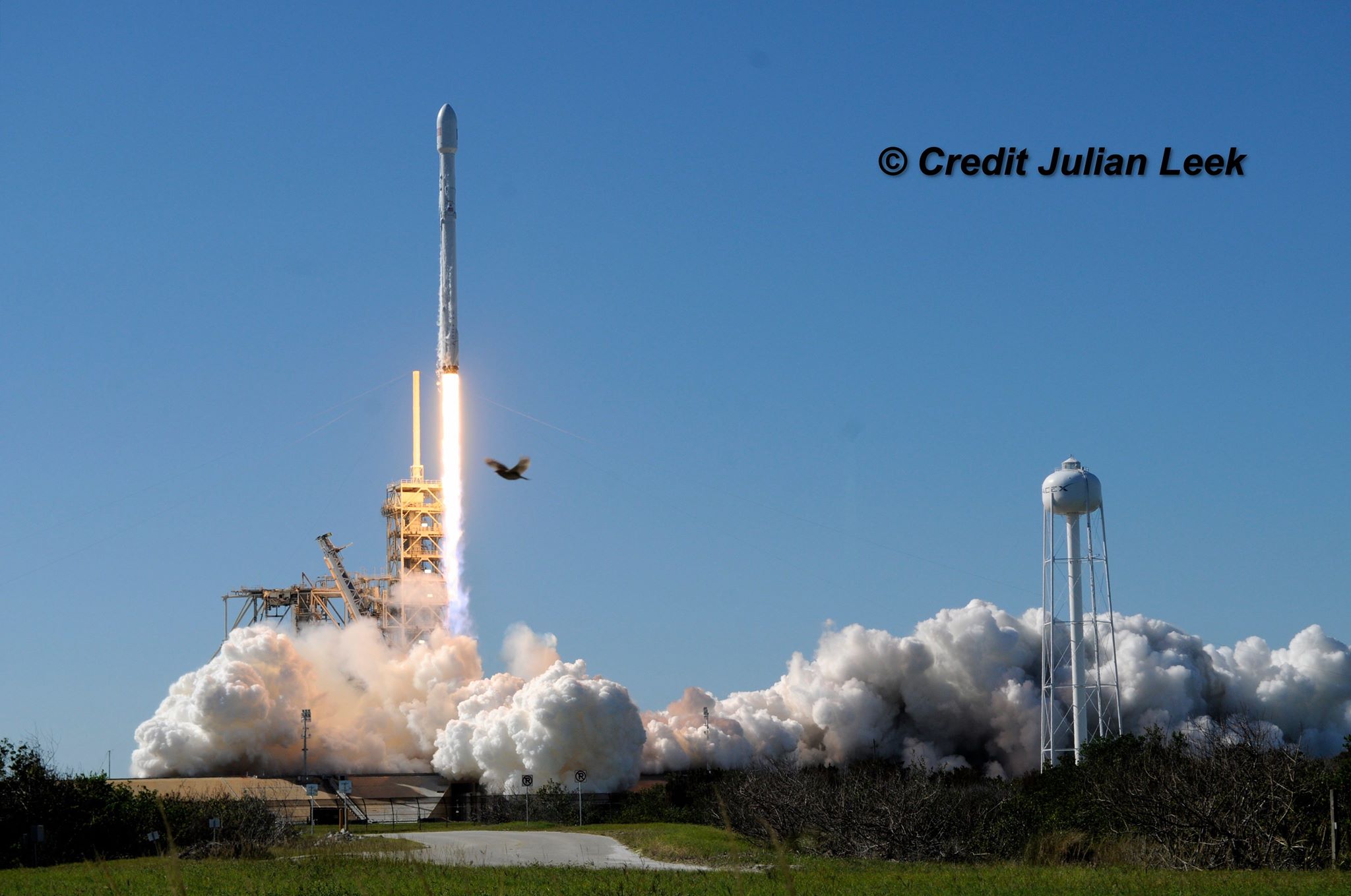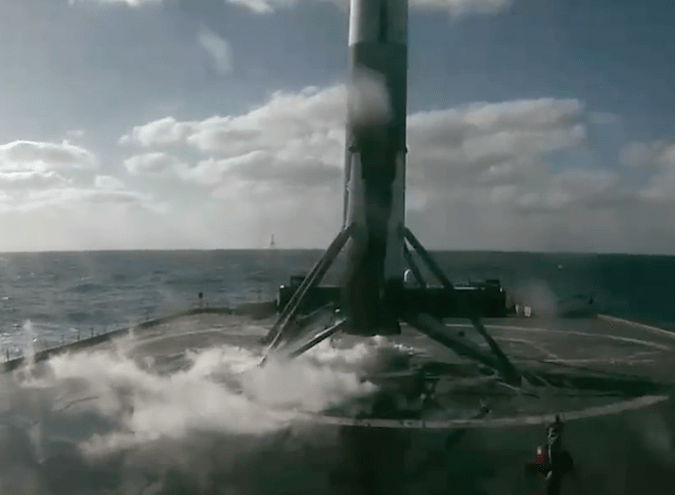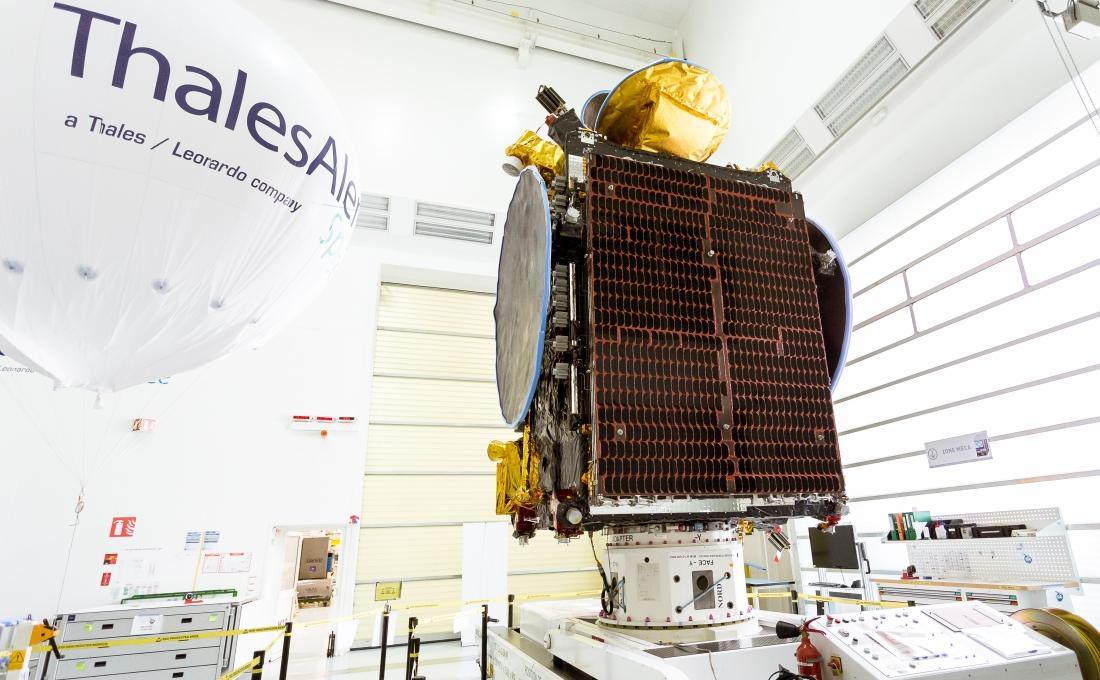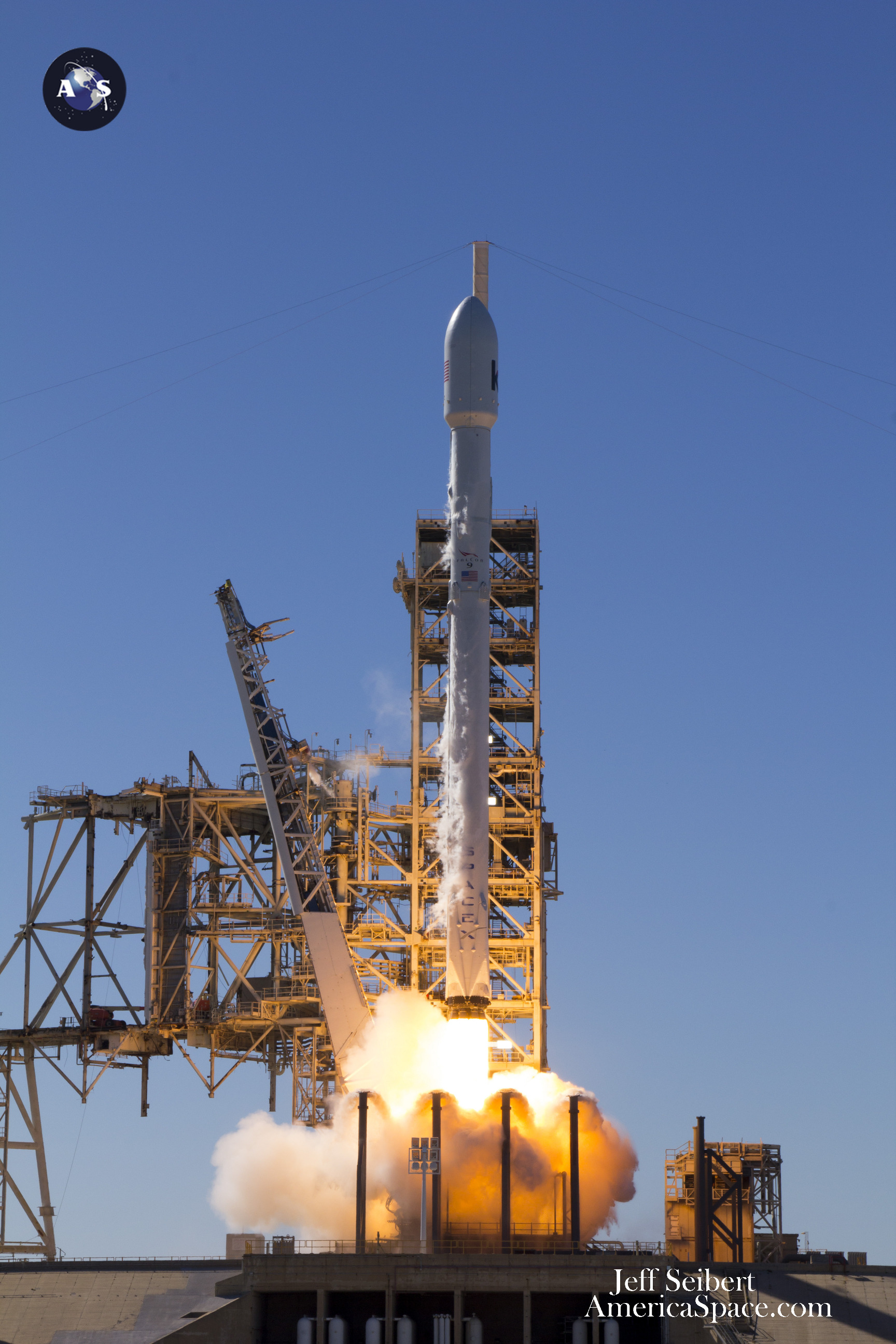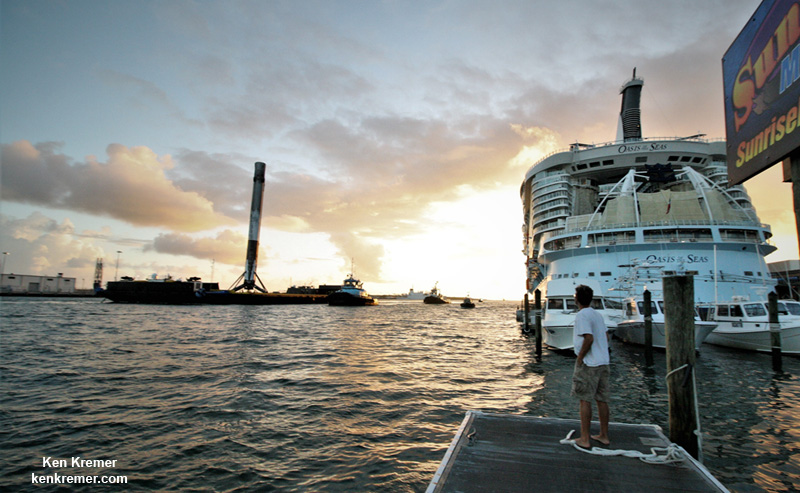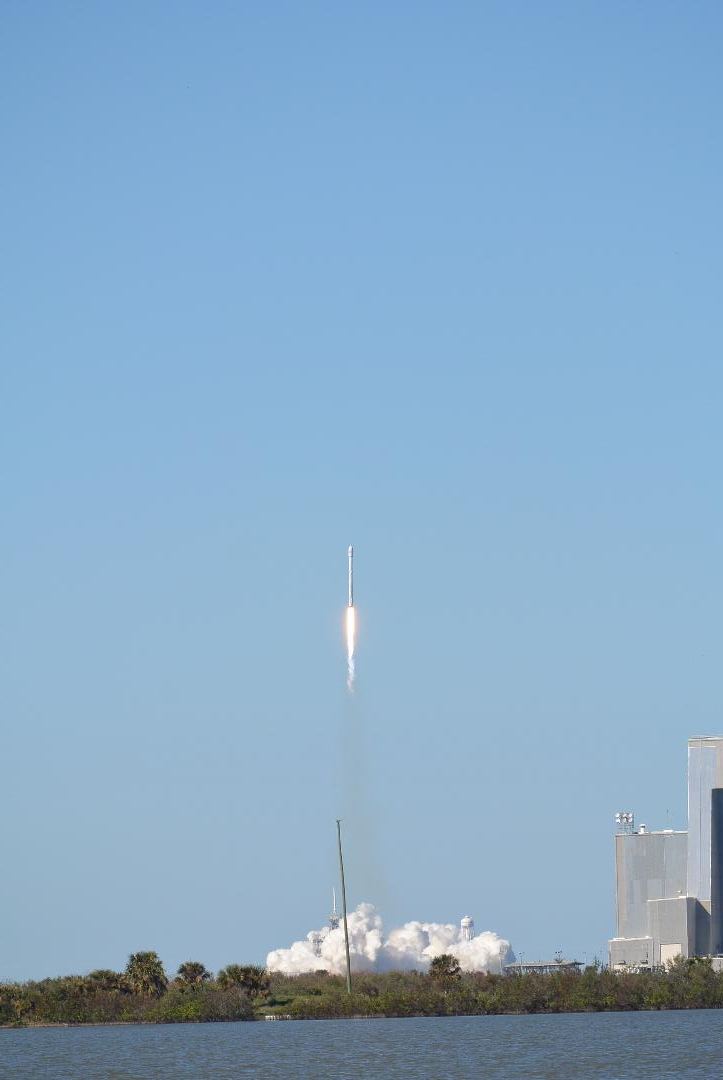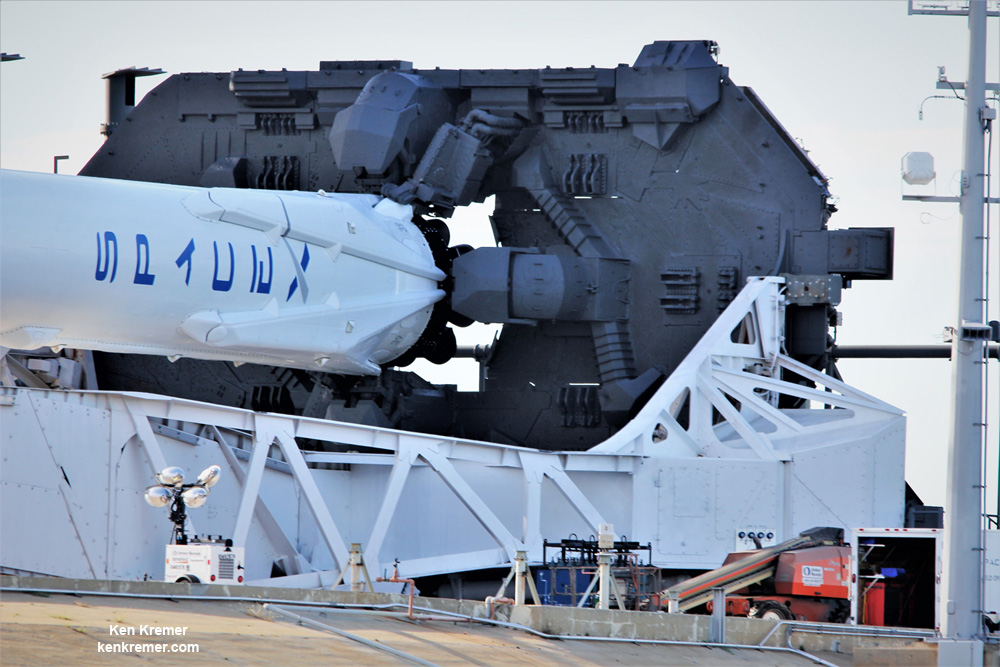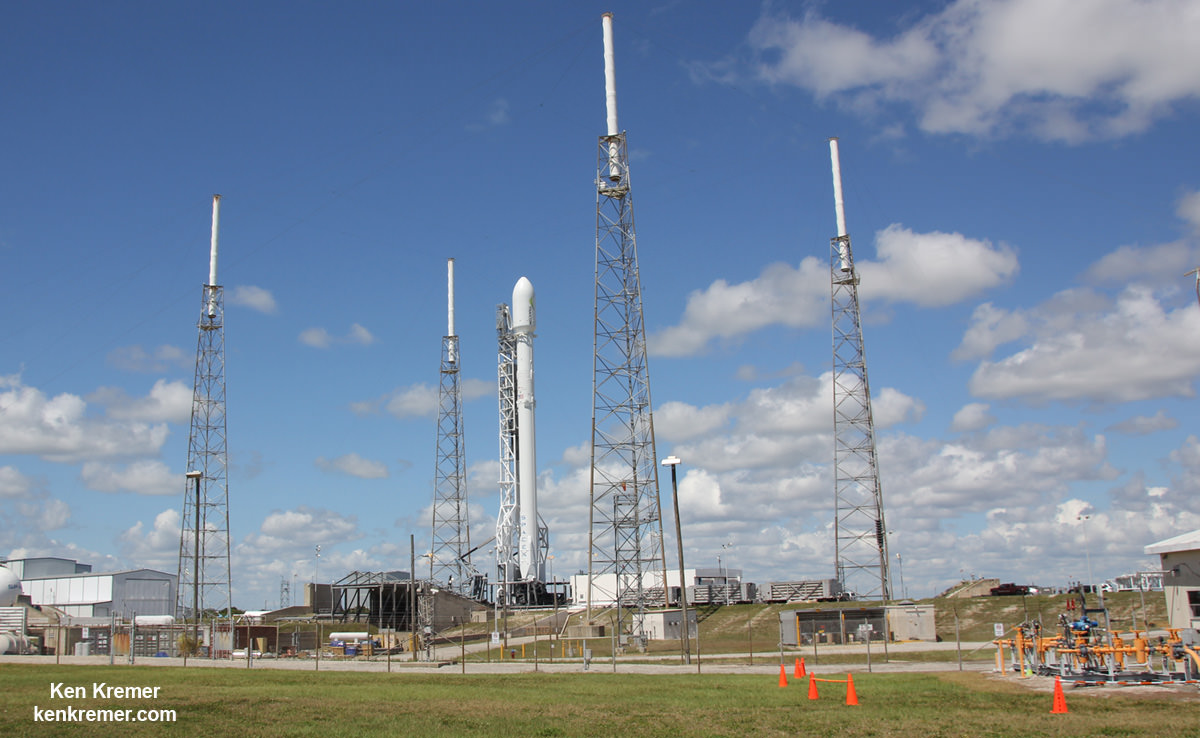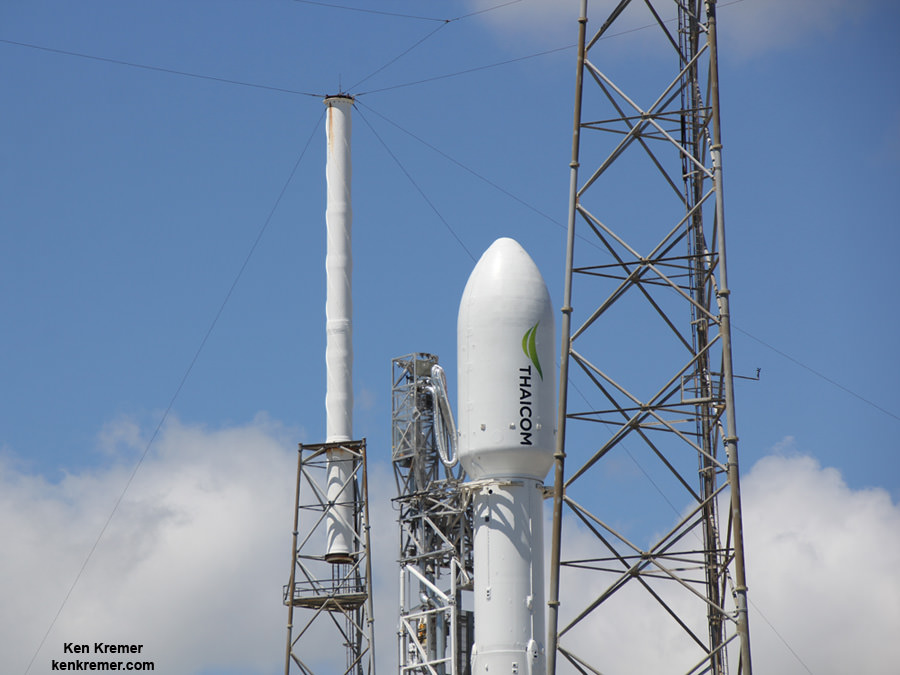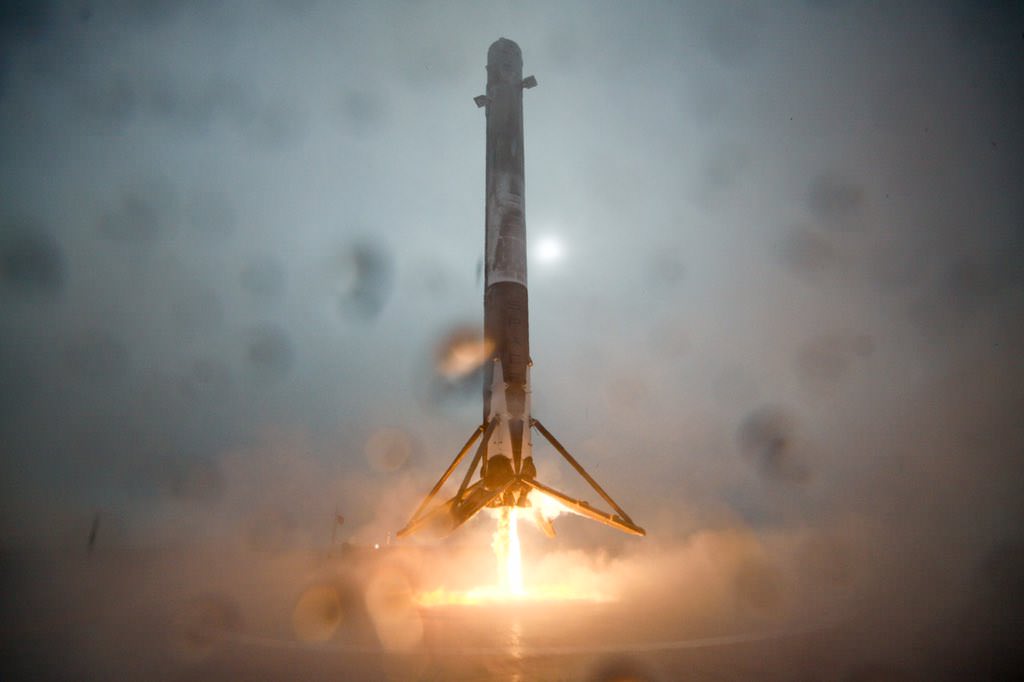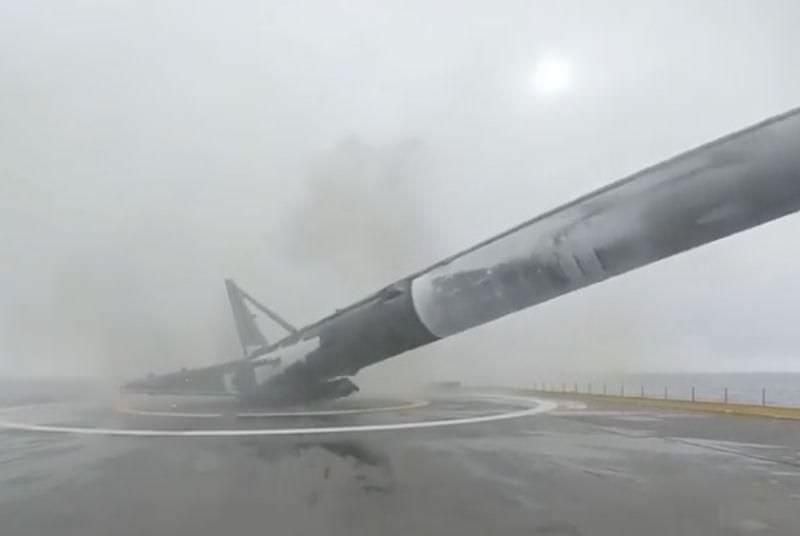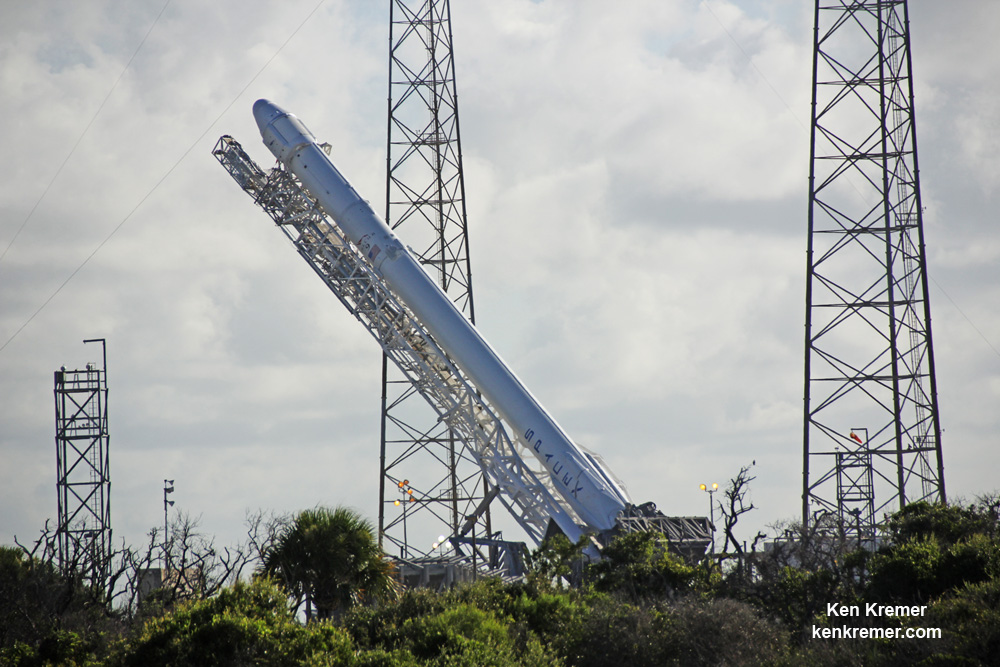
KENNEDY SPACE CENTER, FL – After postponing last week’s liftoff of the covert ‘Zuma’ spy satellite due to last minute concerns about the reliability of the payload fairing encapsulating it while poised for liftoff at KSC pad 39, SpaceX is set to at last resume launches from their previously damaged and now repaired Cape Canaveral pad 40 with a cargo resupply mission for NASA to the International Space Station (ISS) on Dec 4.
NASA and SpaceX have jointly decided to move forward with the Dragon CRS-13 cargo blastoff apparently because the mission does not involve use of the problematical payload fairing that halted last weeks planned Falcon 9 launch with the rocket and the mysterious Zuma payload.
Zuma was ready and waiting at pad 39A for the GO to launch that never came.
Then after a series of daily delays SpaceX ultimately announced a ‘stand down’ for super secret Zuma at pad 39A on Friday, Nov. 17, for the foreseeable future.
SpaceX engineers also had to deal with the after effects of a fire that broke out on a Merlin engine test stand during preparations for a hot fire test that resulted from a leak during a ‘LOX drop’ that halted testing of the Block 5 version of the Merlin 1D.
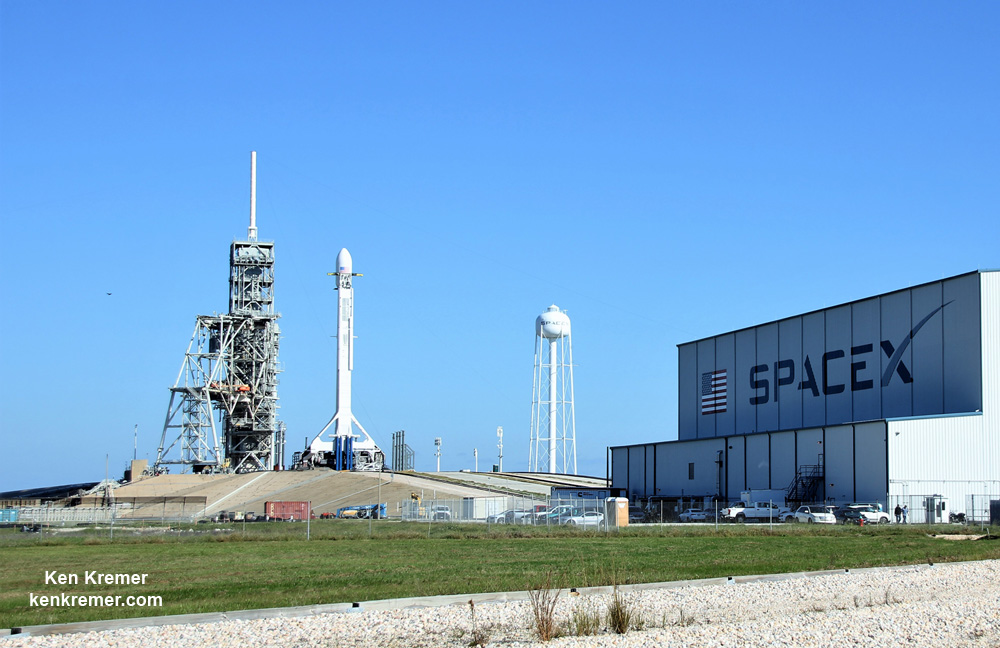
Since SpaceX’s gumdrop shaped Dragon cargo freighter launches as a stand alone aerodynamically shielded spacecraft atop the Falcon 9, it does not require additional protection from atmospheric forces and friction housed inside a nose cone during ascent to orbit unlike satellites with many unprotected exposed surfaces, critical hardware and delicate instruments.
Thus Dragon is deemed good to go since there currently appear to be no other unresolved technical issues with the Falcon 9 rocket.
“NASA commercial cargo provider SpaceX is targeting its 13th commercial resupply services mission to the International Space Station for no earlier than 2:53 p.m. EST Monday, Dec. 4,” NASA announced on the agency blog and social media accounts.
The Dec. 4 launch date for Dragon CRS-13 was announced by NASA’s space station manager Dan Hartman during the Orbital ATK Antares/Cygnus launch campaign that culminated with a successful blastoff last Sunday, Nov 12 from NASA’s Wallops Flight Facility on Virginia’s eastern shore.
But the targeted Dec 4 liftoff from Space Launch Complex 40 on Cape Canaveral Air Force Station, FL, was cast in doubt after SpaceX disclosed the payload fairing issue related launch delay on Friday.
Since last week SpaceX engineers have been busy taking the time to carefully scrutinize all the pertinent fairing data before proceeding with the top secret Zuma launch.
“We have decided to stand down and take a closer look at data from recent fairing testing for another customer,” said SpaceX spokesman John Taylor last Friday.
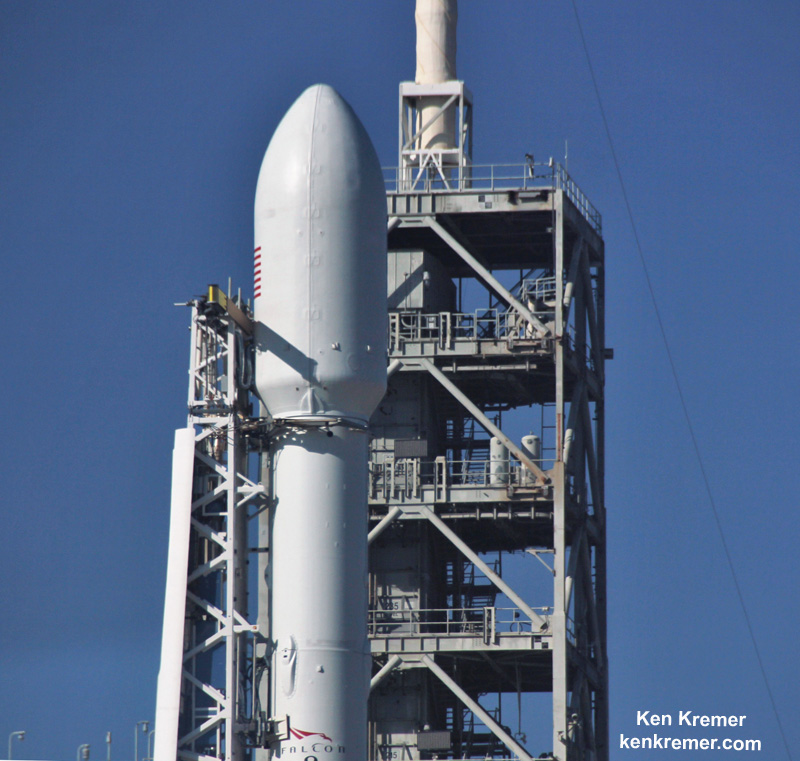
All of SpaceX’s launches this year from Florida’s Spaceport have taken place from NASA’s historic Launch Complex-39A at the Kennedy Space Center.
Pad 39A became SpaceX’s only operational Florida Space Coast launch pad following a catastrophic launch pad accident last year on Sept. 1, 2016 that took place during a routine fueling test that suddenly ended in a devastating explosion and fire that completely consumed the Falcon 9 rocket and Amos-6 payload and heavily damaged the pad and support infrastructure.

Since the Amos-6 accident workers raced to finish refurbishments to NASA’s long dormant pad 39A to transform into operational status and successfully launched a dozen missions this year.
Simultaneously additional crews have been hard at work to repair damaged pad 40 so that flights can resume there as soon as possible for the bulk of NASA, commercial and military contracted missions.
Meanwhile SpaceX wants to upgrade pad 39A to launch the Falcon Heavy and crewed Dragon flight. But those launches cant take place until pad 40 resumes operational status.
The Dragon CRS-13 mission was recently announced as the maiden mission for the reopening of pad 40.
Altogether Dragon CRS-13 will count as the fourth SpaceX Dragon liftoff of 2017.
The 20-foot high, 12-foot-diameter Dragon CRS-13 vessel will carry about 3 tons of science and supplies to the orbiting outpost and stay about 4 weeks.
It will be a reused Dragon that previously flew on the CRS-6 mission.
“The Dragon [CRS-13] spacecraft will spend about a month attached to the space station,” NASA said.
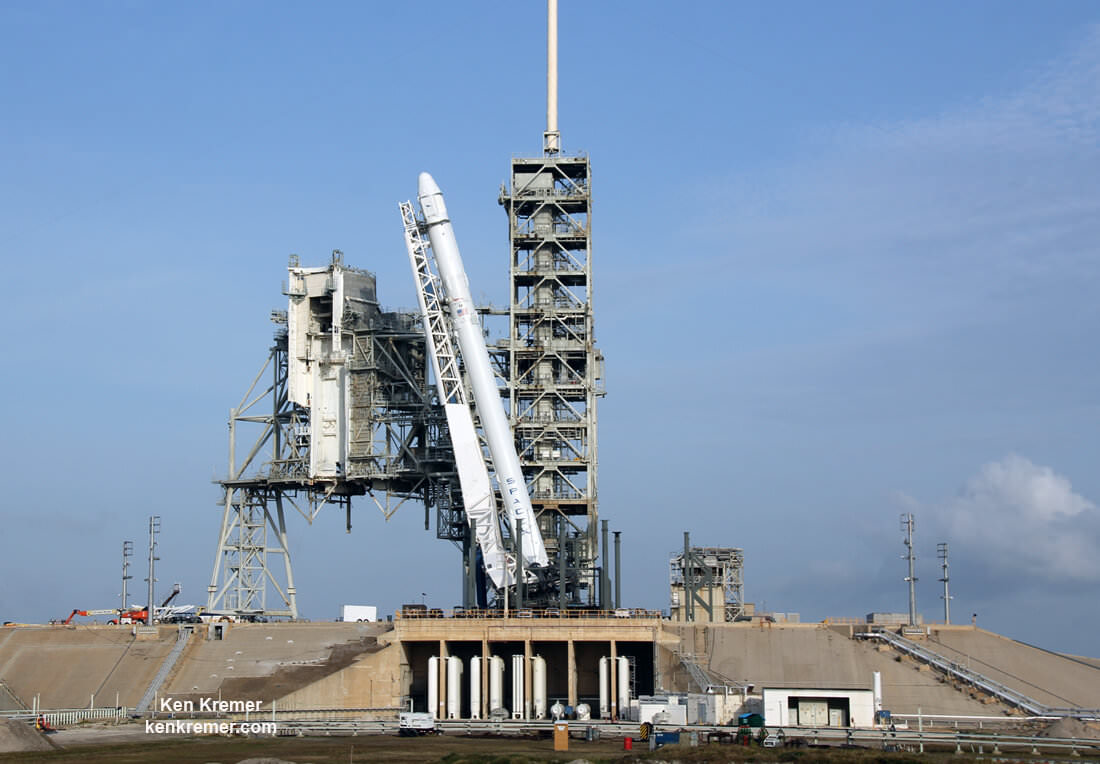
The prior Dragon CRS-12 resupply ship launched from pad 39A on Aug. 14, 2017 from KSC pad 39A and carried more than 6,400 pounds ( 2,900 kg) of science experiments and research instruments, crew supplies, food water, clothing, hardware, gear and spare parts to the million pound orbiting laboratory complex.
Dragon CRS-9 was the last ISS resupply mission to launch from pad 40 on July 18, 2016.
The recently arrived Orbital ATK Cygnus cargo ship is expected to depart the station from the Earth facing Unity node on Dec. 3 to make way for Dragon’s berthing at the Harmony node.
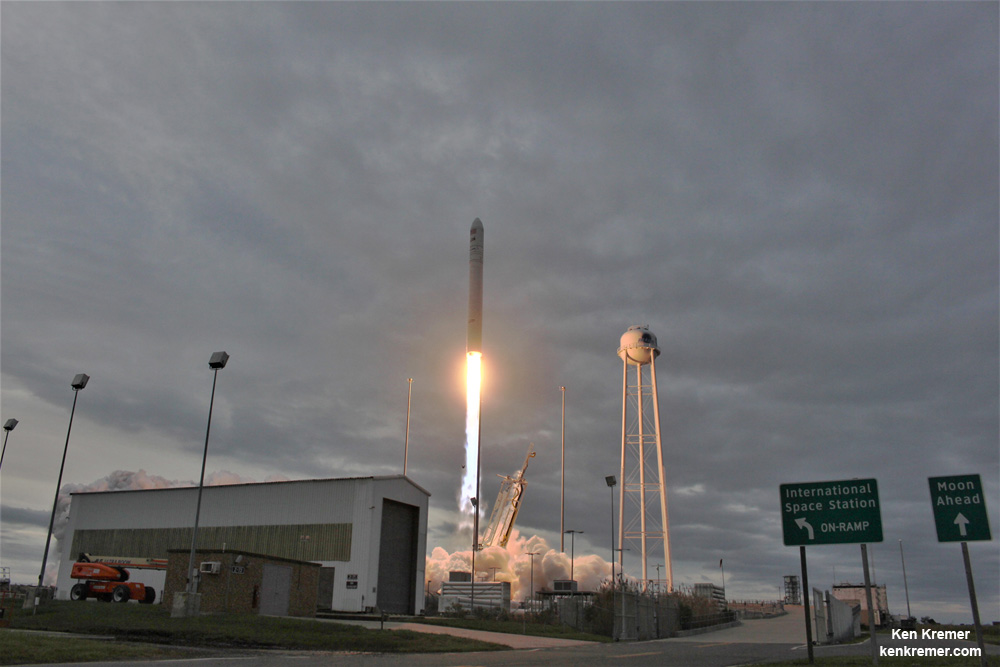
Watch for Ken’s continuing onsite coverage of SpaceX CRS-13, Zuma and KoreaSat-5A & Orbital ATK OA-8 Cygnus and NASA and space mission reports direct from the Kennedy Space Center and Cape Canaveral Air Force Station, Florida.
Stay tuned here for Ken’s continuing Earth and Planetary science and human spaceflight news.
